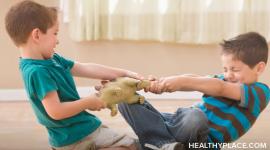Child Behavioral Therapy for Kids with ADHD: What to Expect

Child behavioral therapy is recommended by the Centers for Disease Control (CDC) as the first treatment for kids with ADHD (WebMD, 2018). Child behavior therapy can be used on its own with young children. Preschoolers respond very well to this type of ADHD treatment alone. Children over the age of six also see ADHD symptoms greatly improve with behavioral therapy, but sometimes ADHD medication is used alongside therapy for maximum effect. Whether or not you and your doctor decide that medication is necessary, child behavioral therapy for children with ADHD can help them be successful at home and school.
What is Behavioral Therapy for ADHD and How Can I Expect it to Help?
Behavior therapy is different from other therapies for kids with ADHD. It’s neither talk therapy nor play therapy. It isn’t done in an office with a therapist. It doesn’t focus on a child’s thoughts or emotions. Behavior therapy is all about actions. True to its name, behavioral therapy focuses entirely on a child’s behavior. It’s also unique because parents are the ones to use it with their ADHD child.
An actions-based approach is perfectly suited to ADHD, as the disorder causes kids to do things that get them into trouble. ADHD affects the way kids focus and how long they can concentrate, which isn’t long. Children with ADHD are often inattentive and easily distracted. Hyperactivity and impulse control are hallmarks of ADHD, too. All of these symptoms of ADHD make it difficult for a child to sit still in class, listen to instruction from parents or teachers, and organize schoolwork and other important items.
The challenges created by ADHD are highly disruptive. Kids, however, are capable of learning new behaviors to replace ineffective ones. Behavioral therapy with their parents can help kids:
- Extinguish disorderly, distracting behavior
- Increase positive, cooperative behavior
- Express themselves calmly with less confrontation or hostility
- Learn how to organize and find things more easily
Behavior therapy is straightforward. However, it’s not always easy to use with your child with ADHD, at least at first. Understanding the key components will help you know precisely how to use it with your child.
Important Components and Strategies for Using Behavioral Therapy with Your Child
You can expect success when you follow two basic principles of behavioral therapy. Set clear and specific rules and make them known to your child. Then, enforce them consistently, without exception, using rewards and consequences.
Kids with ADHD learn through reinforcements. They need to know what’s expected of them and what will happen when they comply or don’t comply. They catch on that you mean business when you have a rule; when that rule isn’t hit-or-miss but always applies. They also connect rewards and consequences for your rules and eventually choose the behavior that rewards them.
Beyond the basic principles of behavior therapy for kids with ADHD, there are components of the approach that help you modify your child’s behavior.
- Post rules around the house in relevant places to help your child remember them.
- Use a token economy in which kids earn a small token or a sticker for good behavior. When they have earned enough (an amount set by you, communicated to your child, and that your child can see the progress toward), they receive their reward. Rewards can be small, simple, and free. Perhaps your child doesn’t have to do chores that night or can have some extra time to play before starting the bedtime routine.
- Use a concept called response cost. Your child loses privileges for unwanted behavior.
- When you need your child to do something, such as stay by your side in a busy place, speak slowly and clearly so your child pays attention to your expectation. Use their name to encourage them to listen.
- Use “when/then” statements whenever possible. If your ADHD kid has become distracted and isn’t doing what you asked them to do, and you know they want to go to a friend’s house, calmly remind them that when they finish the task, then you will take them to the friend’s house.
You can learn the finer points of using behavior therapy with your child. ADHD behavior therapists can teach you how to use this approach, or you can take training classes. These classes are often called parent training, parent behavior training, or behavior management training for parents.
You can expect positive results from behavioral therapy for ADHD because it has been shown to help kids improve behaviors associated with the disorder. It’s a process that requires patience, as behaviors often change slowly. With persistence and consistency, though, changes do happen. You can help your child with ADHD improve their behavior.
See Also:
APA Reference
Peterson, T.
(2022, January 17). Child Behavioral Therapy for Kids with ADHD: What to Expect, HealthyPlace. Retrieved
on 2025, November 29 from https://www.healthyplace.com/parenting/adhd/child-behavioral-therapy-for-kids-with-adhd-what-to-expect



